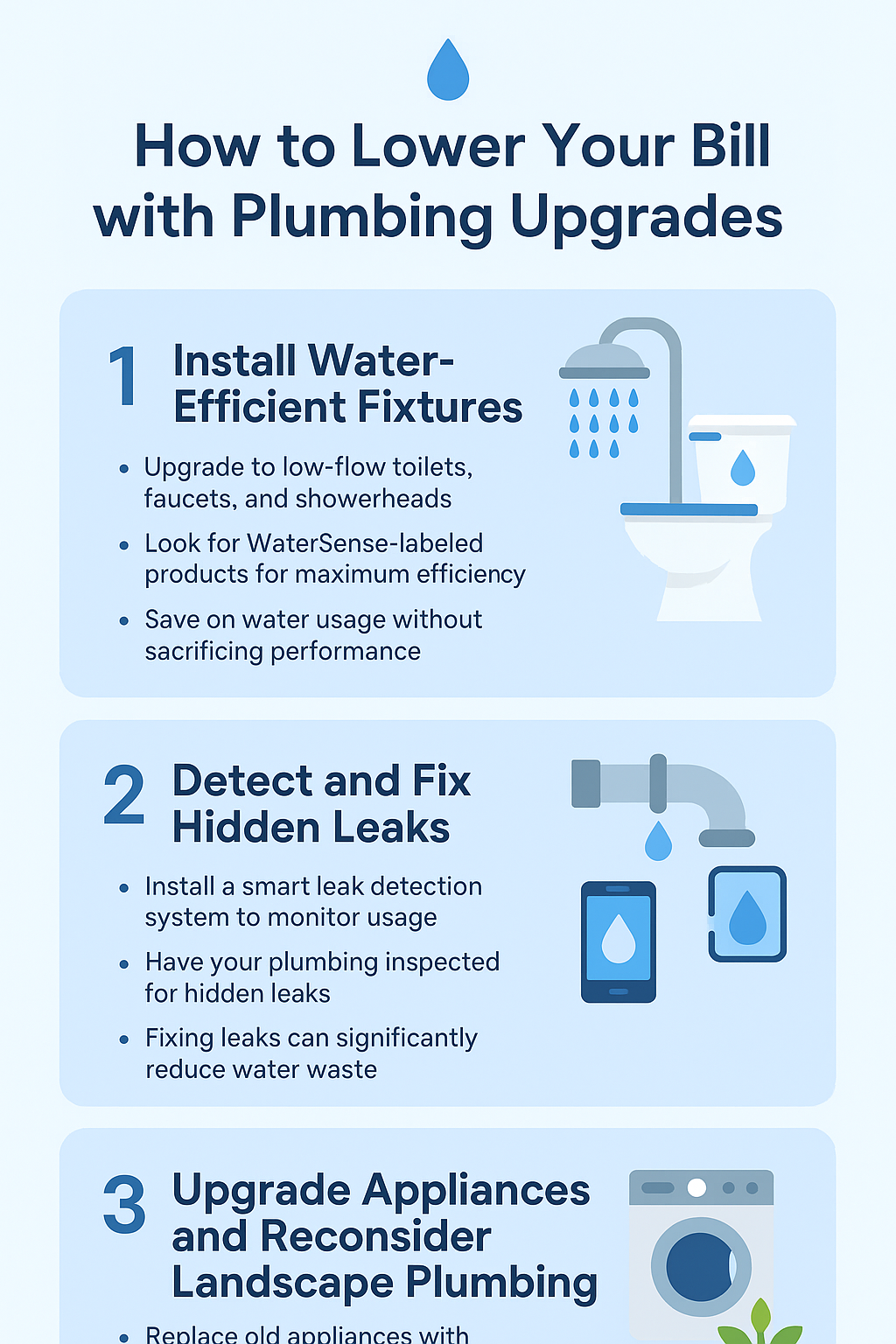- Serving Our NJ Neighbors 24/7 (888) 333-2422
How to Lower Your Water Bill with Plumbing Upgrades

Install Water-Efficient Fixtures to Instantly Cut Costs
One of the easiest and most cost-effective ways to lower your water bill is by upgrading to water-efficient plumbing fixtures. Many older homes still use outdated toilets, faucets, and showerheads that waste significant amounts of water. For instance, traditional toilets use 3.5 to 7 gallons per flush, while modern low-flow toilets use just 1.28 gallons or less—resulting in over 13,000 gallons saved per year for a typical family. Similarly, WaterSense-labeled faucets and showerheads reduce water usage by up to 30% without sacrificing performance.
These upgrades are not only eco-friendly but also come with financial incentives. Many cities and states offer rebates or tax credits for switching to WaterSense-certified products, which can help offset the upfront cost. Additionally, less water used means less energy needed to heat that water—so you’re saving on both your water and energy bills. Whether you’re a homeowner or a property manager, replacing old plumbing fixtures is one of the smartest ways to save money long-term.
Detect and Fix Hidden Leaks Before They Drain Your Wallet
Leaks are silent water wasters—and they often go unnoticed until damage is done or the water bill spikes. According to the EPA, the average household leaks nearly 10,000 gallons of water every year, often due to leaking toilets, dripping faucets, or hidden pipe issues. Even a slow drip can waste hundreds of gallons per month. To stay ahead of the problem, consider investing in a smart leak detection system or water monitoring device. These systems alert you in real-time when irregular water usage patterns are detected, helping you prevent water loss and potential water damage.
For more traditional options, a professional plumbing inspection can identify aging pipes, loose fittings, or faulty appliances contributing to hidden leaks. Fixing these issues not only protects your home but also dramatically lowers your monthly utility costs. It’s especially important in older homes where outdated copper or galvanized steel pipes are prone to corrosion and cracking. By updating to modern PEX or PVC materials and installing shut-off valves or pressure regulators, you’ll avoid costly emergencies and ensure long-term water efficiency.
Upgrade Appliances and Reconsider Landscape Plumbing
Your dishwasher, washing machine, and irrigation system can also play a major role in your monthly water usage. Newer, Energy Star-rated appliances are designed to use significantly less water and energy per cycle. For example, a high-efficiency washing machine uses around 13 gallons per load, compared to 23–30 gallons used by older models. Replacing aging dishwashers, washers, and even water heaters with modern, efficient models will pay off quickly in lower utility bills and better performance.
If you have an outdoor space, optimizing your landscape plumbing can lead to major water savings. Installing drip irrigation systems, moisture sensors, or smart sprinkler controllers prevents overwatering and ensures plants only get the water they actually need. Additionally, rainwater harvesting systems can supplement your home’s water supply, reducing dependence on municipal sources. By combining indoor and outdoor plumbing upgrades, you create a comprehensive water-saving solution that benefits your wallet and the environment.





